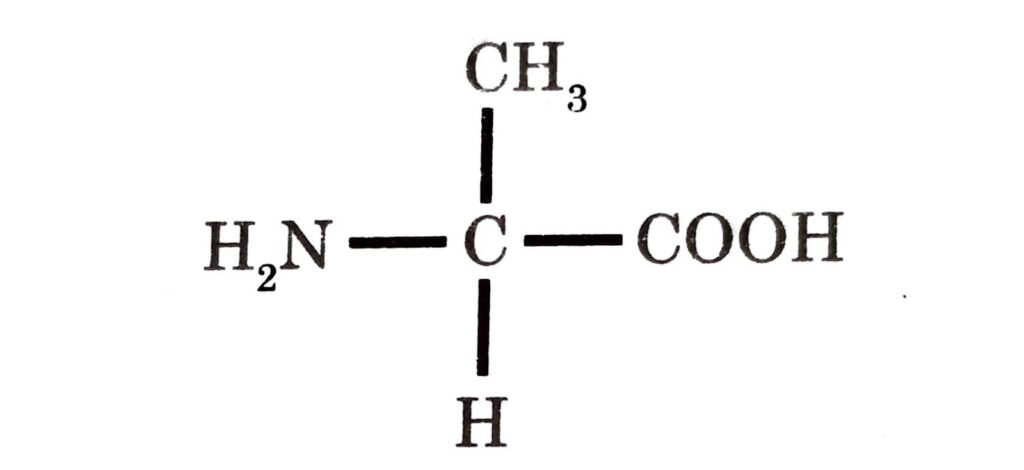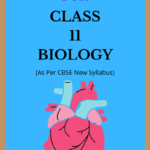NCERT Class 11 Biology Chapter 9 Bio Molecules Solutions to each chapter is provided in the list so that you can easily browse through different chapters NCERT Class 11 Biology Chapter 9 Bio Molecules and select need one. NCERT Class 11 Biology Chapter 9 Bio Molecules Question Answers Download PDF. NCERT Biology Class 11 Solutions.
NCERT Class 11 Biology Chapter 9 Bio Molecules
Also, you can read the NCERT book online in these sections Solutions by Expert Teachers as per Central Board of Secondary Education (CBSE) Book guidelines. CBSE Class 11 Biology Solutions are part of All Subject Solutions. Here we have given NCERT Class 11 Biology Chapter 9 Bio Molecules Notes, NCERT Class 11 Biology Textbook for All Chapters, You can practice these here.
Bio Molecules
Chapter: 9
BIOLOGY
TEXTUAL QUESTIONS ANSWERS
Q.1. What are macromolecules? Give examples.
Ans. Macromolecules are large high molecular weight complex molecules that occur in colloidal state in intercellular fluid. They are formed by the polymerization of low molecular weight micromolecules e.g. Polysaccharides, proteins, nucleic acids.
Q.2. Illustrate a glycosidic, peptide and a phospho-diester bond.
Ans. 1. Peptide bonds:
(i) Amino acids in proteins are linked by peptide bonds.
(ii) Peptide bond (CONH) is formed by dehydration between COOH group of one amino acid and NH₂ group of next amino acid with the removal of H₂O.
2. Phosphodiester bond:
(i) In nucleic acids, the phosphate molecule links [3′ C of] sugar of one nucleoside to [the 5′ C of] sugar of next nucleoside, releasing two water molecules to form a 3′-5′ phosphodiester bond.
3. Glycosidic bonds:
(i) In polysaccharides, the mono-saccharides are linked with glycosidic bond formed by dehydration between two carbon atoms of adjacent monosaccharides.
(ii) Glycosidic bonds are ether bonds.
Q.3. What is meant by tertiary structure of proteins?
Ans. Tertiary Structure-
(i) There is bending and folding to give three dimensional structure.
(ii) Tertiary structure is stabilized by several bonds – hydrogen, ionic bonds, van der Waal’s interactions, covalent bonds, hydrophobic bonds.
Q.4. Find and write down structures of 10 interesting small molecular weight biomolecules. Find if there is any industry which manufactures the compounds by isolation. Find out who are the buyers.
Ans. Adenosine , Thymidine, Sucrose, Maltose, Lactose, Ribose, DNA, RNA, Glycerol, Insulin.
Q.5. Proteins have primary structure. If you are given a method to know which amino acid is at either of the two termini (ends) of a protein, can you connect this information to purity or homogeneity of a protein?
Ans. If we are given a method to know the sequence of proteins then we can connect this information to the purity of a protein because change in the sequence will alter its structure, thereby altering the function.
Q.6. Find out and make a list of proteins used as therapeutic agents. Find other applications of proteins (e.g., cosmetics, etc.)
Ans. Proteins used as therapeutic agents are Thrombin and fibrinogen, Insulin, Renin, Streptokinase etc. Proteins are commonly used in the manufacture of cosmetics, textile industry, and biological buffers.
Q.7. Explain the composition of triglyceride.
Ans. Triglycerides formed by esterification of three molecules of fatty acids with one molecule of glycerol.
Q.8. Can you describe what happens when milk is converted into curd or yoghurt from your understanding of proteins?
Ans. Milk has globular proteins. When milk is converted into curd or yoghurt, denaturation of globular proteins converts them into fibrous proteins. The secondary and tertiary structures of proteins are destroyed by the process of denaturation.
Q.9. Can you attempt building models of biomolecules using commercially available atomic models (Ball and Stick models).
Ans. Ball and stick models are 3-D molecular models that can be used to describe the structure of biomolecules. Atoms are represented as balls and bonds that hold the atoms are represented by the sticks. Double and triple bonds are represented by springs. Size and colour of various atoms are shown by the relative size of the balls.
Q.10. Attempt titrating an amino acid against a weak base and discover the number of dissociating (ionizable) functional groups in the amino acid.
Ans. Titrating a neutral or basic amino acid against a weak base will dissociate only one functional group. Titration between acidic amino acid and a weak acid will dissociate two or more functional groups.
Q.11. Draw the structure of the amino acid, alanine.
Ans. Structure of alanine

Q.12. What are gums made of? Is Fevicol different?
Ans. Gums are hetero-polysaccharides made from two or more different types of monosaccharides. Fevicol is polyvinyl alcohol (PVA) glue. It is not a polysaccharide.
Q.13. Find out a qualitative test for proteins, fats and oils, amino acids and test any fruit juice, saliva, sweat and urine for them.
Ans. (a) Test for protein
Biuret’s test – Biuret’s reagent + protein = colour of the reagent changes from light blue to purple.
(b) Test for fats and oils
Grease or solubility test – Fat dissolves in lighter fluid and not in water in a positive test.
(c) Test for amino acid
Ninhydrin test – Ninhydrin reagent + solution = colourless solution changes to pink, blue, or purple, depending on the amino acid.
Fruit juice contains sugar. Hence it cannot be tested by above said tests. Saliva and urine contains proteins and amino acids. It can be tested with Biuret’s and Ninhydrin test.
Sweat contains fat or oils. It can be tested with Solubility test.
Q.14. Find out how much cellulose is made by all the plants in the biosphere.
Ans. Approximately, 100 billion tonnes of cellulose are made per year by all the plants in the biosphere.
Q.15. Describe the important properties of enzymes.
Ans. All enzymes are globular proteins. Enzymes catalyse chemical reactions in body without any change in themselves. Enzymes are of two types – Simple and conjugate enzymes.
(a) Simple enzymes – enzyme which is made of protein only.
(b) Conjugate enzymes-
(i) Enzyme is made of two parts – apoenzyme and cofactor.
(ii) Protein part is called apoenzyme.
(iii) Non-protein part is called cofactor.
(iv) Holoenzyme – The complete conjugate enzyme consisting of an apoenzyme and a cofactor is called holoenzyme.

Hi! my Name is Parimal Roy. I have completed my Bachelor’s degree in Philosophy (B.A.) from Silapathar General College. Currently, I am working as an HR Manager at Dev Library. It is a website that provides study materials for students from Class 3 to 12, including SCERT and NCERT notes. It also offers resources for BA, B.Com, B.Sc, and Computer Science, along with postgraduate notes. Besides study materials, the website has novels, eBooks, health and finance articles, biographies, quotes, and more.


